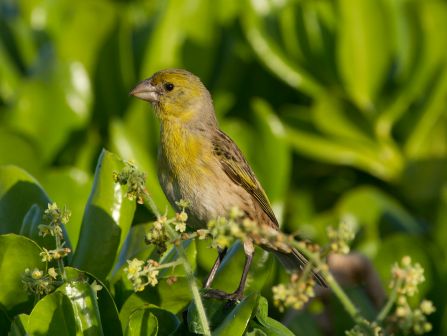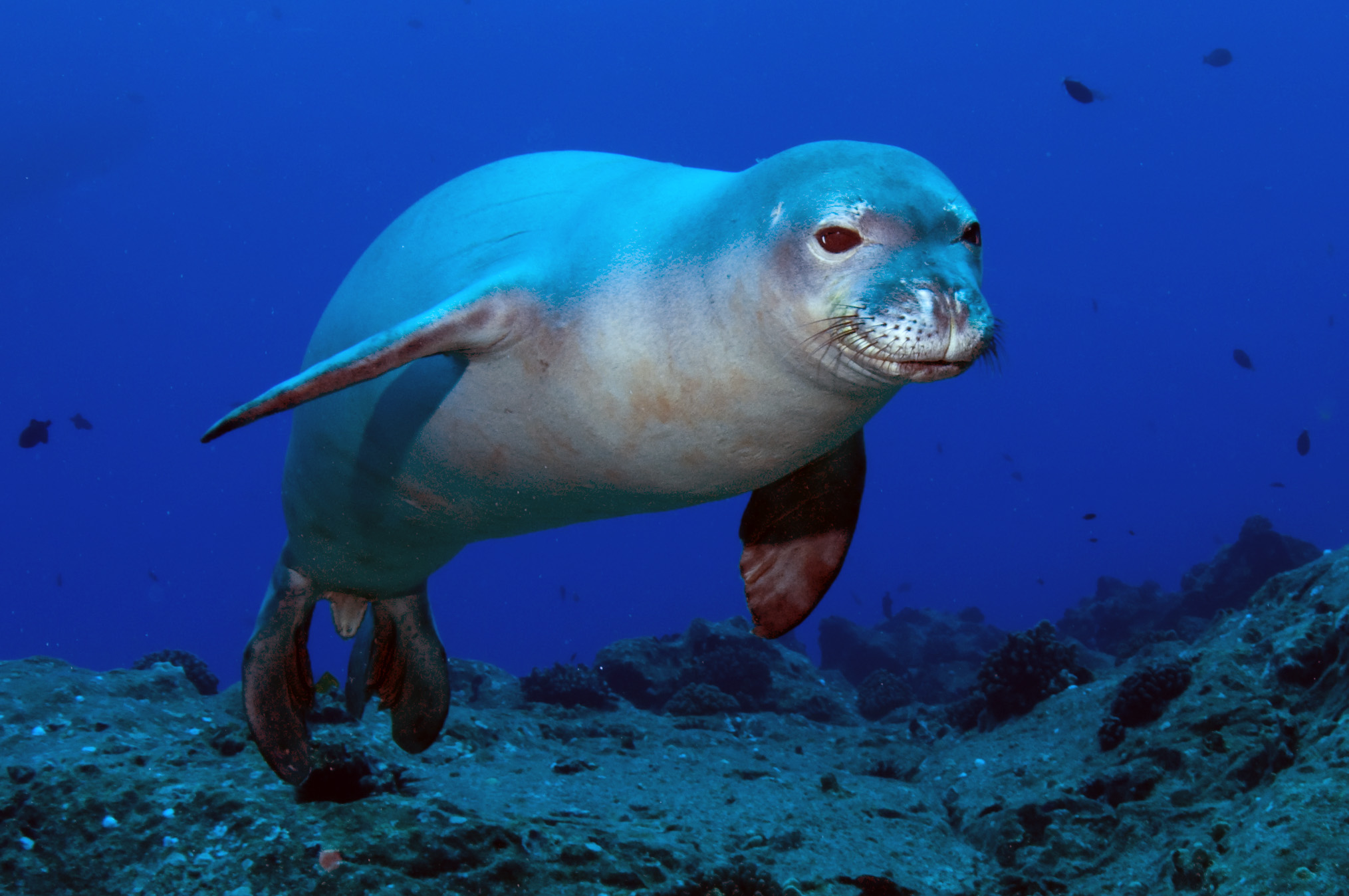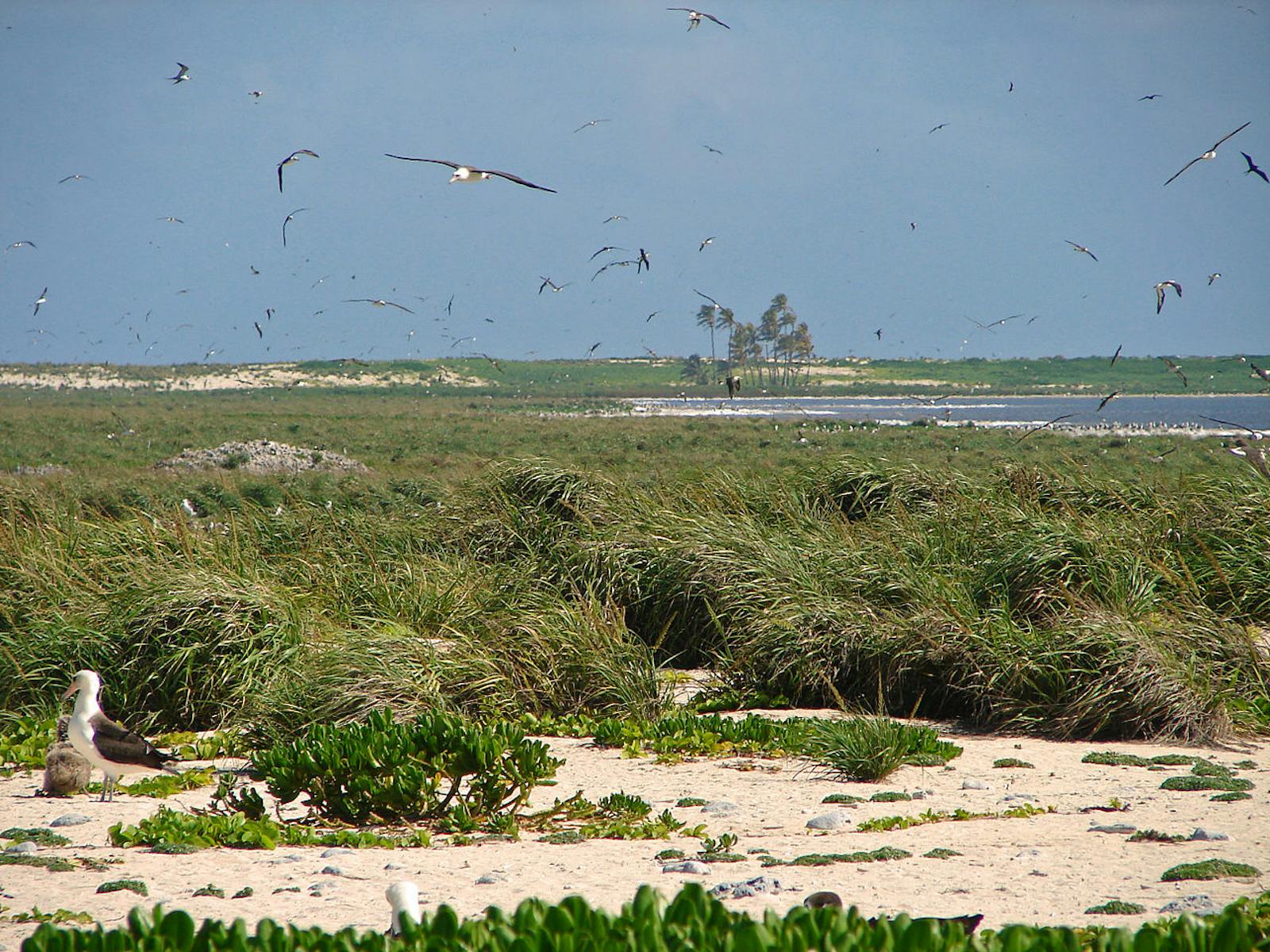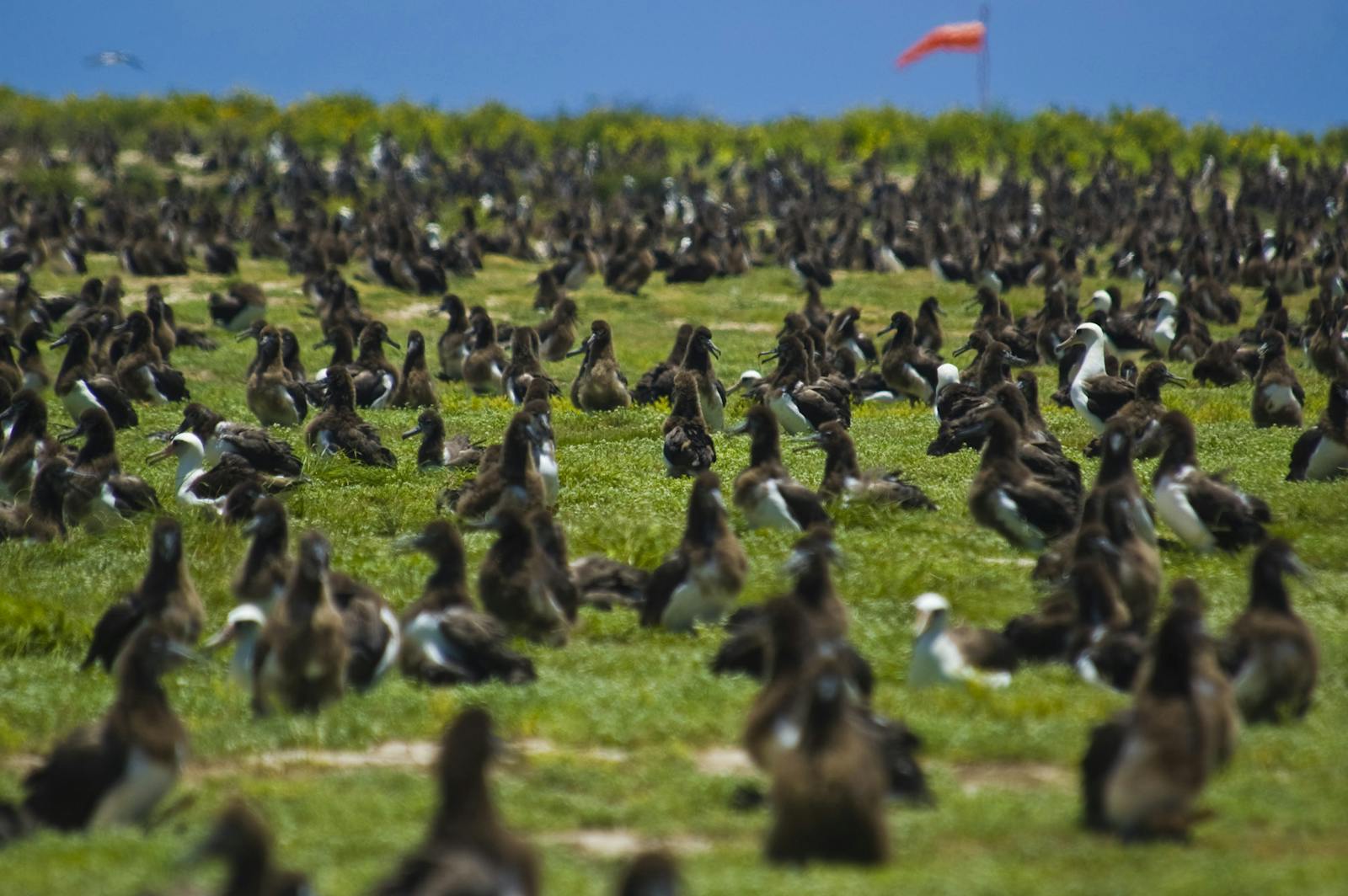Northwest Hawai'I Scrub
The ecoregion’s land area is provided in units of 1,000 hectares. The conservation target is the Global Safety Net (GSN1) area for the given ecoregion. The protection level indicates the percentage of the GSN goal that is currently protected on a scale of 0-10. N/A means data is not available at this time.
Bioregion: Hawai’i Tropical Islands (OC11)
Realm: Oceania
Ecoregion Size (1000 ha):
1
Ecoregion ID:
641
Conservation Target:
100%
Protection Level:
15
States: United States
The remote, small, and low islets of the Northwest Hawaiian Islands support only a handful of terrestrial species that have made it to these islands and been able to survive their challenging conditions. These species living on the edge, so to speak, proved vulnerable to disturbance from introduced mammals, plants, and disease. For example, Laysan Island was once home to the endemic Laysan rail, Laysan honeycreeper, Laysan millerbird, Laysan finch, and Laysan duck, although only the latter two terrestrial birds survive today.

The flagship species of the Northwest Hawai'I Scrub ecoregion is the Laysan finch. Image credit: Creative Commons
The far-flung chain of nine major islands extends approximately 1,600 km from rocky Nihoa in the southeast to low Kure Atoll. Monk seals, green sea turtles, 18 species of seabird, and 47 species of shorebirds utilize the islands for resting and breeding. The immense seabird colonies bring in huge amounts of guano that bring nutrients and support food chains.
Terrestrial biotas on the islands are not diverse, but the island’s pronounced isolation has led to endemic plants, invertebrates, and birds. Nihoa, the highest island with the most diverse biota, has only 20 native vascular plant species (five are found nowhere else), including the endemic palm Pritchardia remota, two extant land birds (Nihoa millerbird and finch), 35 species of endemic, terrestrial arthropods, including the endemic cone-headed grasshopper and Nihoa trapdoor spider, and six species of endemic land snails.
Nihoa likely had extensive Pritchardia palm forests in the past with scrub in the steeper areas. Most of the low atolls typically have banks of low shrubs, salt-tolerant low plants around lagoons, and no trees. Portulaca lutea, goosefoot, and Boerhavia repens are common plants of many of the islands.

Hawiian monk seal. Image credit: Kent Backman, Creative Commons
The simple ecosystems of the low atolls have been heavily disturbed, at times, through the introduction of non-native and invasive rats, goats, rabbits, plants, and insects. Much of the vegetation of Laysan and Lisianski was removed by rabbits at one time, but the vegetation rebounded somewhat after they were eradicated. Tsunamis have washed over low islets and strong storms have had big impacts, including flash floods on Nihoa.
An introduced Schistocerca grasshoppers on Nihoa denuded much vegetation and at least 80 other introduced insects continue to impact native species of plants and animals. Seabirds which bring in nutrients to the terrestrial ecosystems are threatened by longline fisheries, ocean plastics that they ingest, invasive plants altering nesting shrublands, and changing climate.
The priority conservation actions for the next decade are to: 1) continue to support control and eradication of the most impactful non-native species on Nihoa Island to promote favorable conditions for the restoration of extensive Pritchardia palm forests; 2) support efforts to eradicate non-native mammals on key seabird nesting islands, including rats, and to control invasive plants that alter shrubland structures; and 3) continue to support recovery programs for bringing threatened endemic terrestrial birds back from the brink of extinction.
Citations
- Conant SC, P Christensen, P Conant, W Gagne, ML Goff. 1983. The unique terrestrial biota of the Northwestern
- Hawaiian Islands. Proc. Symp. Resource Invest. Northwestern Hawaiian Islands, 25-27 May 1983:77-94. Sea Grant Coli. Prog. University of Hawaii, Honolulu.
- Mueller-Dombois D, FR Fosberg. 1998. Vegetation of the Tropical Pacific Islands. Springer-Verlag, New York.




